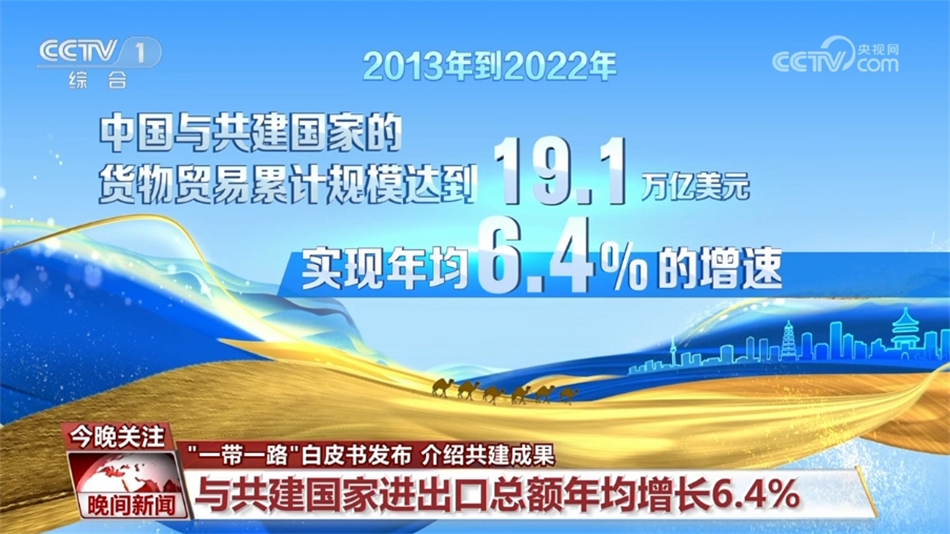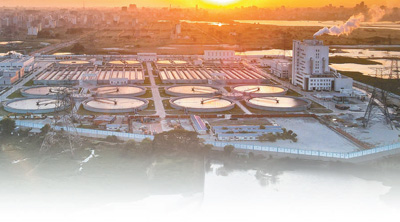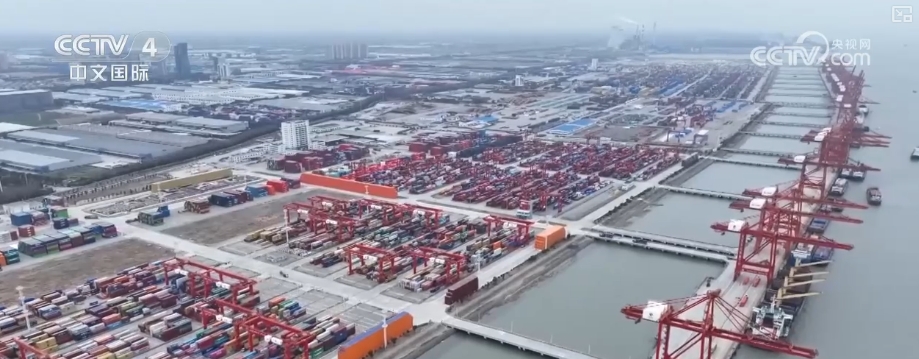The Silk Road: More Than Silk's Golden Channel
The Silk Road: More Than Silk's Golden Channel
As a bridge for the exchanges between the East and the West in ancient times, the Silk Road is not only a simple trade channel, but also a link for the exchanges and integration of culture, science and technology, religion, and ideas. Since the Han Dynasty Zhang Qian went on a mission to the Western Regions in the 2nd century BC to start east-west transportation
As a bridge for the exchanges between the East and the West in ancient times, the Silk Road is not only a simple trade channel, but also a link for the exchanges and integration of culture, science and technology, religion, and ideas. Since Zhang Qian of the Han Dynasty went on a mission to the Western Regions to start east-west transportation in the 2nd century BC, the Silk Road has witnessed the prosperity and integration of human civilization after thousands of years of development and evolution. Traditionally, people regard it as the "golden channel of silk" and emphasize its important position in commodity trade. But in fact, the value of the Silk Road far exceeds the exchange of goods. It has played an immeasurable role in promoting civilized exchanges, promoting economic prosperity, conveying religious ideas, and scientific and technological innovation. This article will explore the rich connotation of the Silk Road from multiple angles, emphasizing that it is not only a channel of "silk", but also a golden bond of human civilization.
1. Historical background and evolution of the Silk Road
1.1 Origin and early development
The origin of the Silk Road can be traced back to Zhang Qian's mission to the Western Regions in the Han Dynasty, opening a precedent for exchanges between China and the West. Early trade mainly focused on silk, spices, gems, ceramics and other commodities, gradually forming a huge network intertwined by land and sea. The onshore Silk Road mainly passes through Central Asia, West Asia and South Asia, connecting China with Europe and Africa, forming a complex transportation system. The Maritime Silk Road extends along the South China Sea, Indian Ocean, Red Sea, Mediterranean and other waters, promoting the economic prosperity of countries along the route.
1.2 Rising times
By the Tang Dynasty, the Silk Road reached its peak. The Tang Dynasty's open policy, prosperous urban economy and strong military strength made the Central Plains region the world's trade center. Chang'an (now Xi'an) has become a hub for East-West exchanges, with merchants, envoys and scholars from Central Asia, West Asia, South Asia and even as far as Africa. During this period, in addition to silk, tea, porcelain, paper, medicinal materials and other commodities were exported in large quantities, and cultural exchanges were also unprecedentedly prosperous.
1.3 Fall and Change
With the political turmoil in the late Middle Ages, the rise of maritime routes and the great geographical discoveries in Europe, the onshore Silk Road gradually declined and maritime trade became the mainstream. After the 16th century, with the opening of new routes, European countries gradually replaced Central Asia and became the center of global trade. The traditional functions of the Silk Road were gradually marginalized, but its cultural and spiritual influence was still far-reaching.
2. The multiple values of the Silk Road
2.1 Gold channel for commodity trade
The Silk Road in the traditional sense is first and foremost a channel for commodity exchange. China's silk, ceramics, tea, papermaking, gems and spices from Central Asia, spices and glass products from West Asia, and metal products and handicrafts from Europe, have promoted the prosperity of the economy in various regions through this route. In particular, the export of silk not only meets the demand for luxury goods in Central Asia, West Asia and even Europe, but also drives the development of related industries.
2.2 The bridge of cultural exchange
The Silk Road is an important channel for cultural exchanges between the East and the West. Buddhism was introduced from India to the Central Plains, spread to Central Asia, West Asia and even Europe through the Silk Road, becoming an important religious link connecting the East and the West. At the same time, the Silk Road also brought various cultural elements such as Islamic culture, Persian culture, Greek and Roman culture, and Indian culture in Central Asia, promoting the integration and innovation of civilizations.
2.3 The link of technology communication
The Silk Road is not only a channel for commodities, but also a platform for communication of scientific and technological innovation. Four major inventions such as paper, gunpowder, compass, and printing were spread along the Silk Road, greatly promoting the progress of human science and technology. For example, papermaking was introduced from China to the Middle East and Europe, promoting the popularization of books and culture; the introduction of gunpowder changed the military pattern; and the application of the compass promoted the great development of maritime navigation.
2.4 The link between politics and diplomacy
The Silk Road is also an important platform for political exchanges and diplomatic cooperation between countries. Countries along the route have established a complex political relationship network through trade, envoys, marriage alliances, etc. This not only enhances regional stability, but also promotes understanding and cooperation among different civilizations. For example, in the Tang Dynasty, they maintained close diplomatic ties with Central Asian countries, Persia and Arab countries.
2.5 Transmitting religious thoughts and philosophy
Religion played an important role in the spread of the Silk Road. Religions such as Buddhism, Christianity, Islam, Zoroastrianism were introduced to different regions through this route, promoting the exchange and integration of religious ideas. Buddhist Zen, Tibetan Buddhism, etc. have developed in China, Tibet and Mongolia, with far-reaching influence. The spread of religion also brought about rich philosophical thoughts and cultural traditions, and promoted the diversified development of civilization.
3. The modern significance of the Silk Road
3.1 The spiritual inheritance of the Belt and Road Initiative
China in the 21st century proposed the "Belt and Road" initiative, aiming to revitalize the spirit of the ancient Silk Road and promote economic cooperation and cultural exchanges among countries along the route. This initiative emphasizes connectivity and win-win cooperation, inherits the tradition of promoting civilized exchanges on the ancient Silk Road, and provides new ideas for global governance.
3.2 Promote regional economic integration
Through infrastructure construction and trade facilitation, the "Belt and Road" promotes economic integration among countries along the route and promotes regional cooperation and common development. This not only helps improve infrastructure and reduce poverty, but also enhances mutual understanding and cooperation among countries.
3.3 Cultural exchange and humanistic cooperation
The modern Silk Road is not only a link for economic cooperation, but also a platform for cultural exchanges. Through academic exchanges, tourism cooperation, cultural heritage protection and other means, countries along the route jointly maintain and inherit rich historical and cultural heritage, and promote the in-depth development of cultural exchanges.
3.4 Technological innovation and sustainable development
With the help of modern scientific and technological means, countries along the Silk Road can realize information interconnection, green energy cooperation, smart city construction, etc., and promote sustainable development. This not only conforms to the global trend of environmental protection, but also helps achieve long-term regional prosperity.
4. Cultural Heritage and Protection of the Silk Road
4.1 Important cultural heritage
The Silk Road has rich cultural heritage, including the Mogao Grottoes in Dunhuang, the Kashgar Ancient City, the Pamir Plateau, the Persian Ancient City, etc. These heritages reflect the integration and development of diverse civilizations and have important historical and artistic value.
4.2 Protection and inheritance
Over time, many cultural heritages face natural erosion, war damage and tourism pressures. The international community and relevant countries strengthen cooperation and take protection measures, such as digitization, restoration, and establishment of protected areas, to ensure that these precious heritages can be passed on.
V. Conclusion
As one of the most important communication channels in human history, the Silk Road is worth far beyond the scope of commodity trade. It is the bridge of civilization, the disseminator of science and technology, the bond of religion, and a symbol of the integration of multiculturalism. Today, with the help of the "Belt and Road" initiative, the spirit of the Silk Road has been continued and developed, providing new impetus for global cooperation and civilized exchanges. In the future, only by continuously strengthening cooperation and understanding among countries along the route can we truly achieve the grand goal of "connecting the world and promoting win-win results" on the Silk Road.





